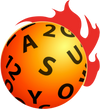Rewiring the Brain Through Eye Movement: The Neuroplasticity Advantage in Parkinson’s

One of the most hopeful developments in Parkinson’s care is the growing understanding of neuroplasticity—the brain’s ability to rewire, adapt, and form new connections throughout life. Even in the presence of neurodegeneration, the brain retains the capacity to change. But neuroplasticity isn’t automatic—it needs to be activated through specific types of stimulation and activity. One of the most effective and underutilized ways to do this? Eye movement training.
The eyes are a direct extension of the brain, and every eye movement involves complex coordination between visual, motor, and cognitive areas. Studies show that eye movement training can lead to measurable changes in brain function, improving both motor coordination and cognitive flexibility (Kapoula et al., 2014). This makes targeted eye movement exercises a uniquely powerful way to drive neuroplastic change in people with Parkinson’s—especially when mobility is limited and traditional movement-based exercise is challenging.
Fast, intentional eye movements (like saccades), tracking exercises (like smooth pursuit), and directional gaze shifts all require the brain to process input quickly, make decisions, and adjust. These skills overlap with key Parkinson’s symptoms—such as bradykinesia (slowness), freezing, and even speech issues. Regularly practicing eye movements can stimulate the basal ganglia and other motor planning regions, helping to re-route brain activity around damaged dopamine pathways.
The BrainSpeed Ball® is specifically designed to engage these eye-brain systems. As users visually track the ball, call out letters or numbers, and respond with quick physical actions, they are stimulating not just eye muscles but deep brain circuits involved in attention, timing, decision-making, and movement. This makes it more than just a tool for coordination—it becomes a portable neuroplasticity trainer that people can use daily to build new brain pathways.
When used consistently, eye movement training becomes a gateway to restoring lost functions, improving focus, and increasing confidence. For people with Parkinson’s, it offers a science-backed way to participate in their own brain’s recovery—empowering, practical, and full of possibility.
Learn about our Parkinson's Specific Training Program Here:
Sources:
-
Kapoula, Z., Yang, Q., Vernet, M., & Bonnet, M. (2014). Cognitive and postural improvement in patients with Parkinson’s disease through eye movement training. Frontiers in Neurology, 5, 168. https://doi.org/10.3389/fneur.2014.00168
-
Bavelier, D., Green, C. S., Pouget, A., & Schrater, P. (2012). Brain plasticity through the life span: Learning to learn and action video games. Annual Review of Neuroscience, 35, 391–416. https://doi.org/10.1146/annurev-neuro-060909-152832

